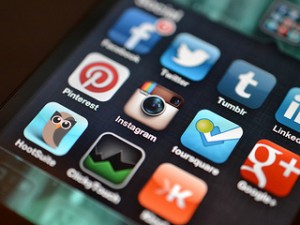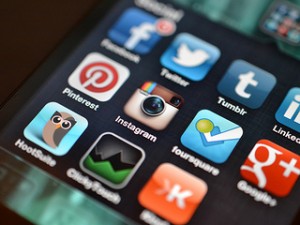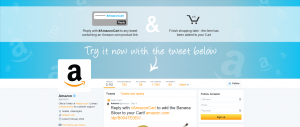![]() With last week’s announcement that Instagram advertising is coming in the near future (first through a limited test among U.S. users), brand marketers have taken notice. There will soon be a new way to reach the 150 million Instagram user audience. Ads will roll out with a small number of brands on both the Instagram website and mobile app with a focus on enhancing the user experience with ads.
With last week’s announcement that Instagram advertising is coming in the near future (first through a limited test among U.S. users), brand marketers have taken notice. There will soon be a new way to reach the 150 million Instagram user audience. Ads will roll out with a small number of brands on both the Instagram website and mobile app with a focus on enhancing the user experience with ads.
An Instagram blog post explained the upcoming advertising launch to users as follows:
“Our aim is to make any advertisements you see feel as natural to Instagram as the photos and videos many of you already enjoy from your favorite brands. We want these ads to be enjoyable and creative in much the same way you see engaging, high-quality ads when you flip through your favorite magazine.”
Instagram users will also be able to hide ads they don’t like and provide feedback on those ads. Let’s hope that the Instagram team will take many of the lessons its parent, Facebook, has learned about advertising to deliver a strong offering to advertisers that its user audience accepts.
Not only is Instagram joining Facebook in building an advertising platform that will generate revenue, but the announcement comes at the same time news of Twitter’s initial public offering hit the streets. In the Securities and Exchange Commission (SEC) filing from Twitter, the company revealed that it has 218 million monthly active users. Yoree Koh and Suzanne Vranica of The Wall Street Journal explain that this is significantly less than the 1.5 billion active monthly users that Facebook boasts. That 218 million Twitter user audience represents 22% of U.S. Internet users according to Forrester Research, but that’s very small compared to the 72% of U.S. Internet users who check Facebook at least once per month.
Koh and Vranica also explained in their article that Twitter advertisers don’t believe an audience of 218 million users is big enough to invest in Twitter advertising. Today, Twitter usage peaks during big events, and the rest of the time, it’s dominated by a small group of power users. Many advertisers are waiting for Twitter to find better ways to increase engagement among wider audiences and to encourage them to log in more frequently.
These shortcomings make most consumer brands choose Facebook first. Of course, Facebook advertising has its own long list of problems, but today, it’s the social network that most brands prioritize. Is it truly the right place for those brands to invest ad dollars or do they just think they have to be there because the Facebook user audience is so big and the site is so popular? For brand marketers, the problem becomes trying to explain why they’re not advertising on Facebook to executives.
So which is best for brands—Instagram, Twitter, or Facebook? The answer is, there is no single answer. Every brand is different, but advertising on Facebook because that’s where 1 billion people are doesn’t mean the investment will drive a positive return. The Super Bowl gets massive viewership each year, but that doesn’t mean every brand should advertise during the big game. If you can create a highly relevant offer and release it at the right time and to the right audience on Instagram, Twitter, or Facebook, then invest. However, as with all marketing investments, if you can’t generate the needed ROI, it doesn’t matter if there are 1 billion users, 218 million users, or 100 users.
Susan Gunelius is the author of 10 marketing, social media, branding, copywriting, and technology books, and she is President & CEO of KeySplash Creative, Inc., a marketing communications company. She also owns Women on Business, an award-wining blog for business women. She is a featured columnist for Entrepreneur.com and Forbes.com, and her marketing-related articles have appeared on websites such as MSNBC.com, BusinessWeek.com, TodayShow.com, and more.
She has over 20 years of experience in the marketing field having spent the first decade of her career directing marketing programs for some of the largest companies in the world, including divisions of AT&T and HSBC. Today, her clients include large and small companies around the world and household brands like Citigroup, Cox Communications, Intuit, and more. Susan is frequently interviewed about marketing and branding by television, radio, print, and online media organizations, and she speaks about these topics at events around the world. You can connect with her on Twitter, Facebook, LinkedIn, or Google+.


